L10.tech
UIUX | ServiceThe project intends to use service design as a core framework to enhance employee experience and career inclusion, and to optimize the onboarding phase of Gen Z people in the workplace through the integration of an AI mentor system and personalized support strategies to address critical challenges such as adaptation difficulties, role uncertainty, and lack of confidence. By leveraging tools like journey mapping and prototyping, the project ensures that solutions are tailored to provide a more efficient and inclusive experience during the onboarding phase.



What is L10.tech?

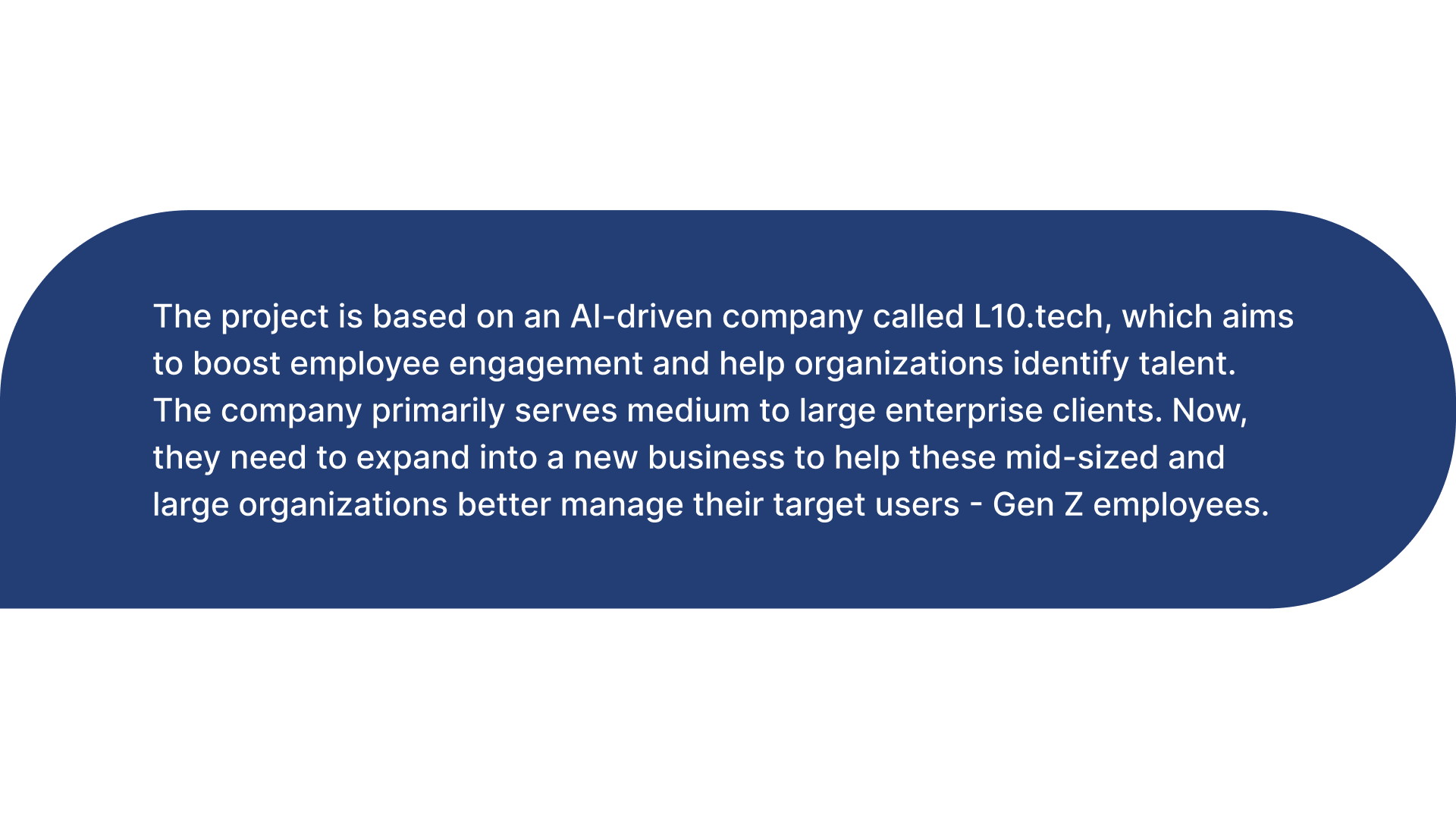
Design Process

BACKGROUND
The
Importance of Optimizing the Onboarding Experience.Surveys show that more than 60% of Gen Z employees
lack effective career guidance at the beginning of their careers, which not
only affects their career adaptability but also leads to an increase in
employee turnover in organizations. Therefore, optimizing the
onboarding experience for Gen Z women not only improves employee satisfaction
but also strengthens the culture of diversity and inclusion.
Characteristics of Gen Z. Gen Z has often been labeled with many stereotypes and generalizations. The truth is, Gen Z is not an entirely different "breed" compared to other generations, but they do approach the workplace differently. To understand what specifically sets Gen Z apart, consulting firm Deloitte surveyed 1,531 Gen Z individuals. The results show that money and salary are important to Gen Z, but they place less emphasis on salary than other generations. At the same time, Gen Z values other benefits from employers, such as work-life balance, flexible working hours, and perks. In terms of core values, Gen Z is particularly interested in a company's ethics, practices, and social impact, with a focus on policies related to DEI (diversity, equity, inclusion).
Differences Between Gen Z Women and Gen Z Men in the Workplace. There are important correlations and interactions between gender and generational variables. They suggest that both gender and generational factors influence value priorities, and therefore when exploring people's preferences and value orientations, researchers should consider gender differences in conjunction with generational cohorts, rather than looking at the two in isolation.
Characteristics of Gen Z. Gen Z has often been labeled with many stereotypes and generalizations. The truth is, Gen Z is not an entirely different "breed" compared to other generations, but they do approach the workplace differently. To understand what specifically sets Gen Z apart, consulting firm Deloitte surveyed 1,531 Gen Z individuals. The results show that money and salary are important to Gen Z, but they place less emphasis on salary than other generations. At the same time, Gen Z values other benefits from employers, such as work-life balance, flexible working hours, and perks. In terms of core values, Gen Z is particularly interested in a company's ethics, practices, and social impact, with a focus on policies related to DEI (diversity, equity, inclusion).
Differences Between Gen Z Women and Gen Z Men in the Workplace. There are important correlations and interactions between gender and generational variables. They suggest that both gender and generational factors influence value priorities, and therefore when exploring people's preferences and value orientations, researchers should consider gender differences in conjunction with generational cohorts, rather than looking at the two in isolation.




The principle of empathy in service design
requires designers to start from the users' point of view and gain an in-depth
understanding of their needs and emotions. To this end, we first collected the
real experiences of 14 Gen Z female employees with bachelor's degrees or above
in the process of joining the workplace through qualitative interviews, which
revealed the main problems they faced during the joining stage. In addition, we
collected the views of 7 male Gen Z employees on DEI policy, including the
policy for female employees, and 2 HRs from medium to large companies, who were
asked about the current management system for new hires at the onboarding stage
and what the company's policy is for female employees.


Both Gen Z women and men valued the company's
DEI policy, and based on the findings from the interview, a persona and user
journey map of Gen Z women was created, which revealed that Gen Z women were
prone to self-doubt, lack of a clear career path, and difficulty adapting to
the company culture.
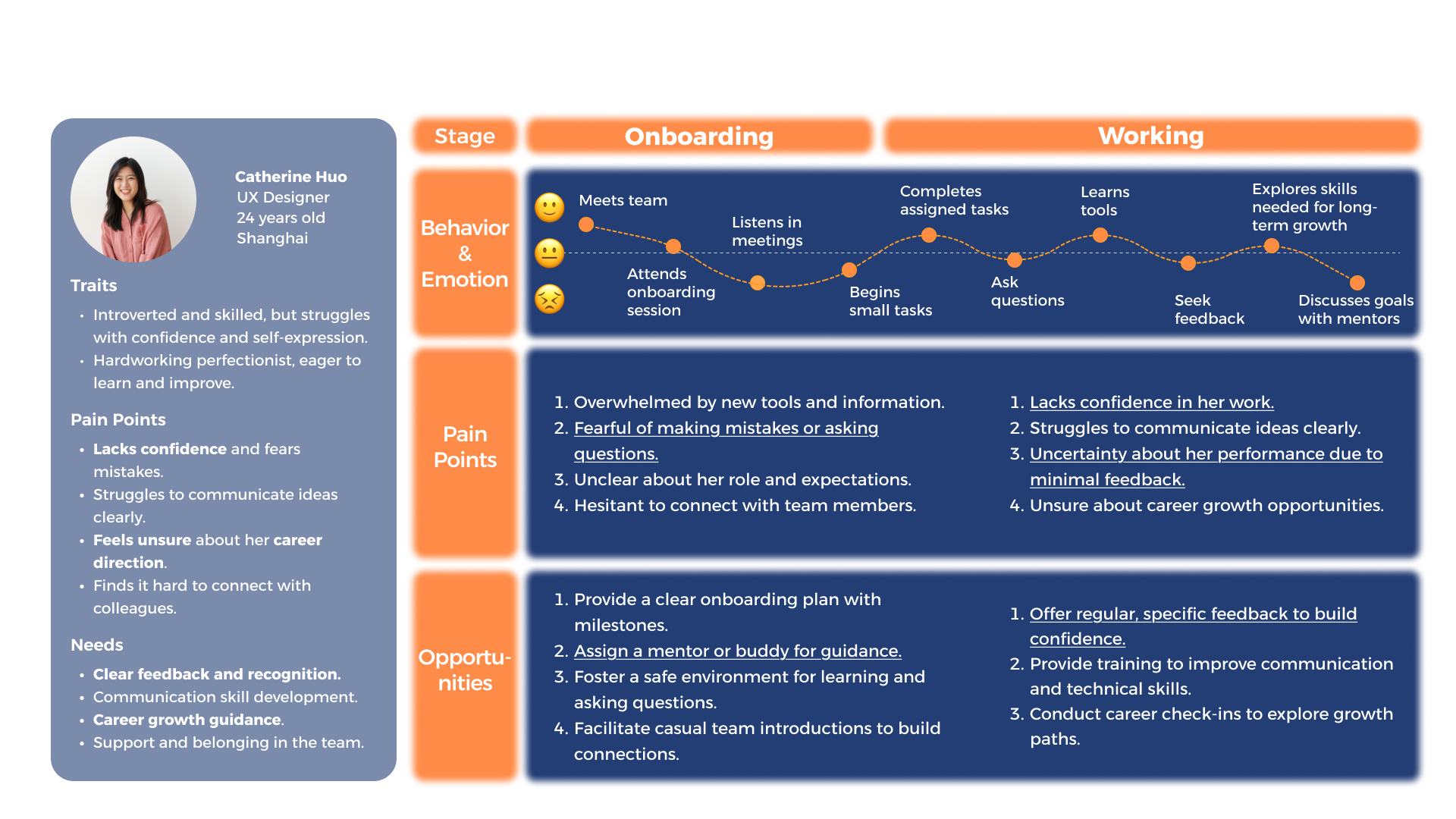
The task of this phase is to generate and develop
solutions based on the problems and insights identified in the exploration
phase, and to make the generated solutions comprehensive and sustainable. This
required in-depth summarization of participant discourse and the design of a
Gen Z women's persona and user journey for the currently existing onboarding
process, which needed to encompass and reflect their needs, motivations, and
expectations, as well as the potential opportunities that could be generated by
a series of touchpoints in the process.

IDEATION

Our Expectation

Get support from an personalized AI buddy
to quickly adapt and build confidence

Guidance from role model mentor for
a clearer personal career development paths
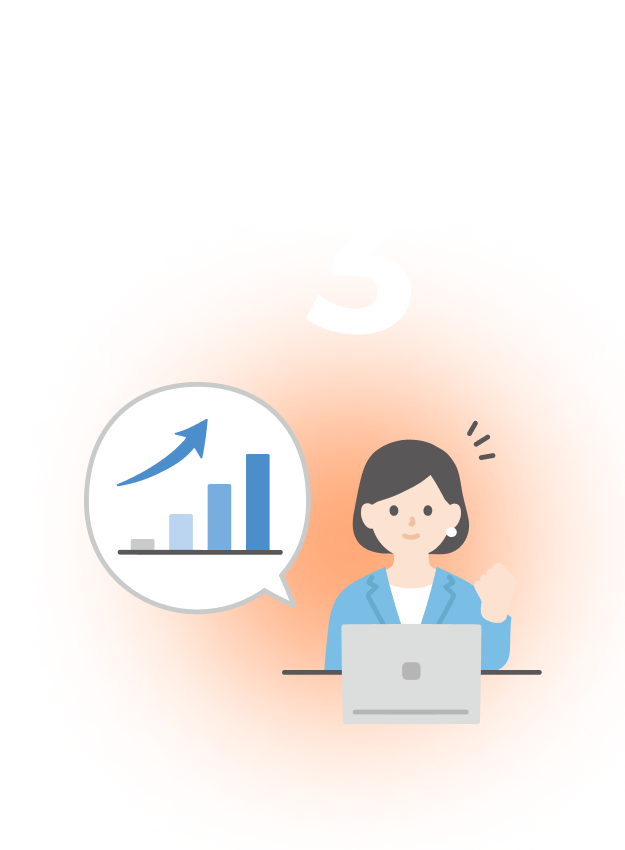
Empowering Gen Z female to become
independent and self-reliant employees

We used a service roadmap to
map out the full picture of the system. The service roadmap divides the
onboarding journey into three key stages:
Pre-Onboarding, Probation Period, and Post-Probation.
Pre-Onboarding, Probation Period, and Post-Probation.

DELIVERABLES
We empower Gen Z women to confidently navigate their professional journeys by providing innovative tools, supportive networks, and mentorship opportunities.
Through personalized development platforms, advocacy initiatives, and practical guidance, we create equitable and respectful work environments where their potential is fully realized and celebrated.
Through personalized development platforms, advocacy initiatives, and practical guidance, we create equitable and respectful work environments where their potential is fully realized and celebrated.


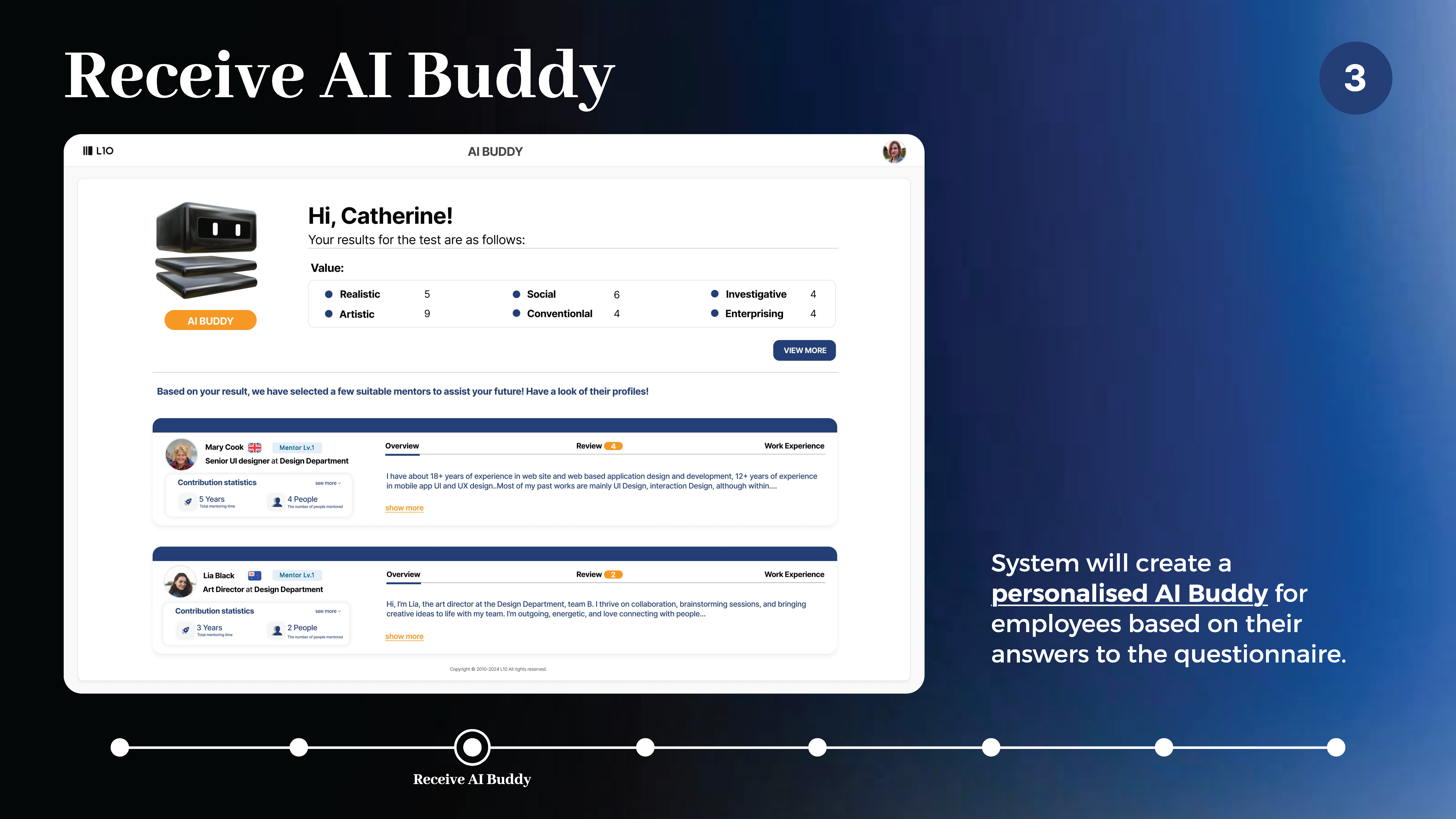

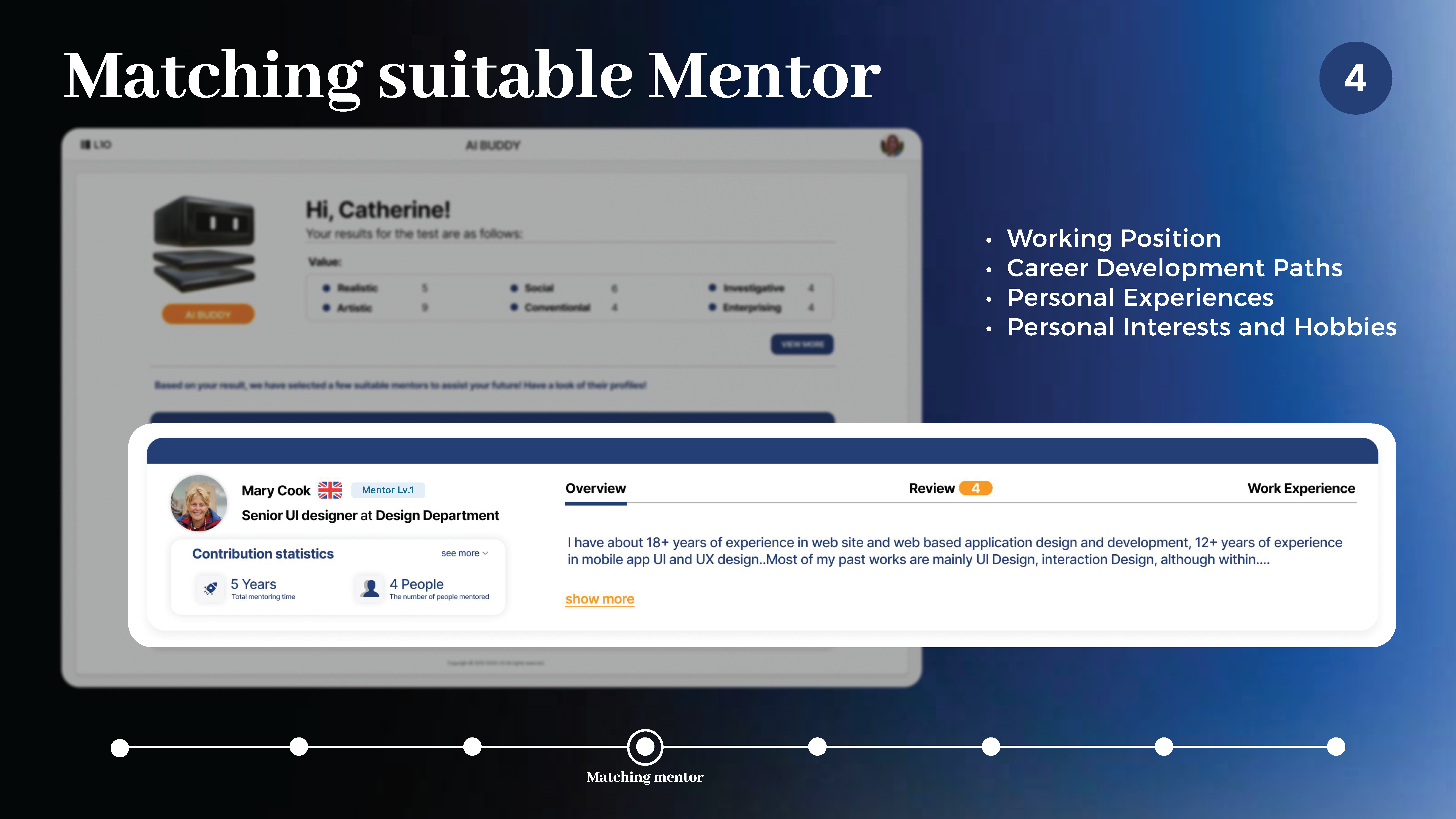
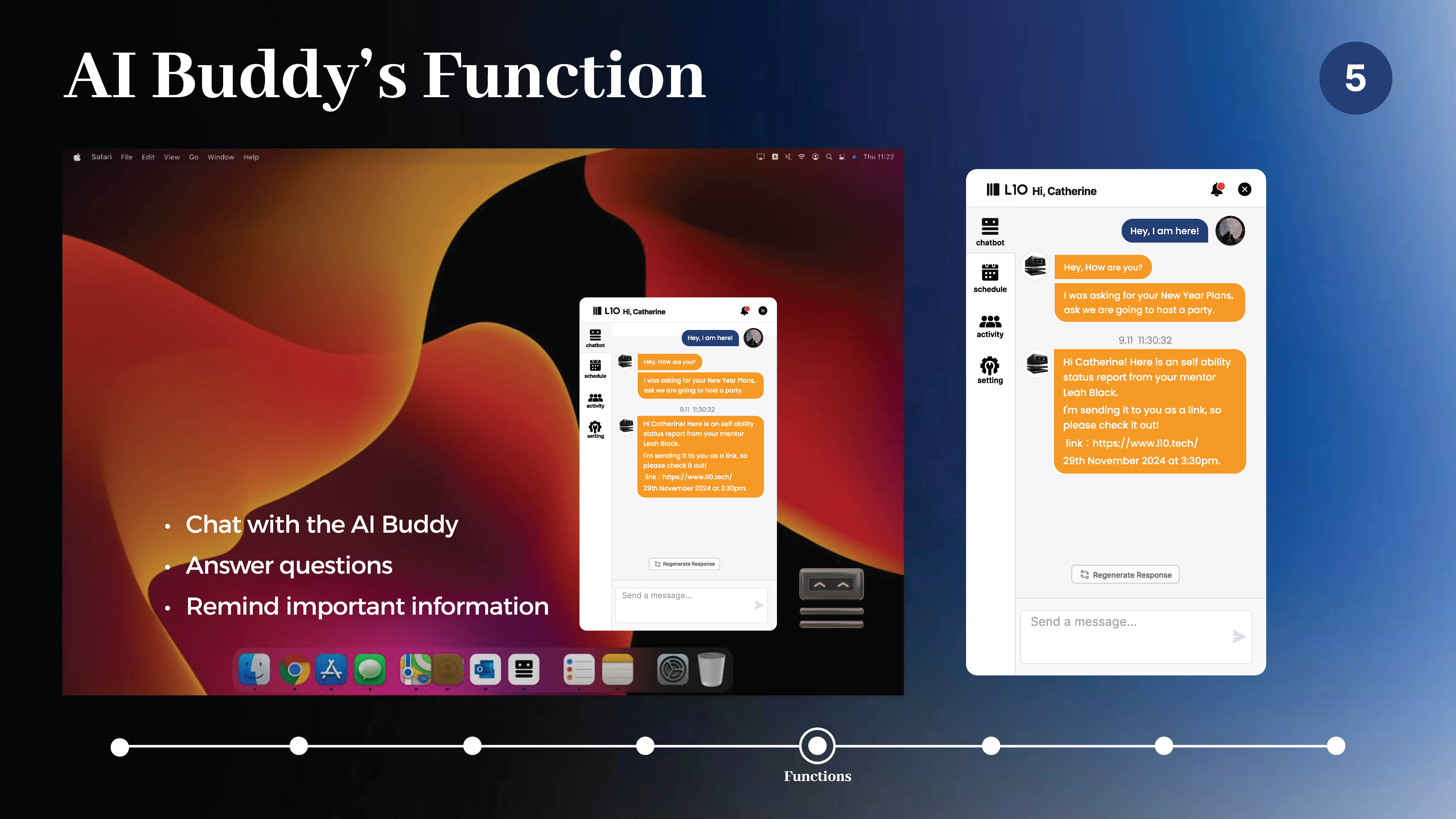


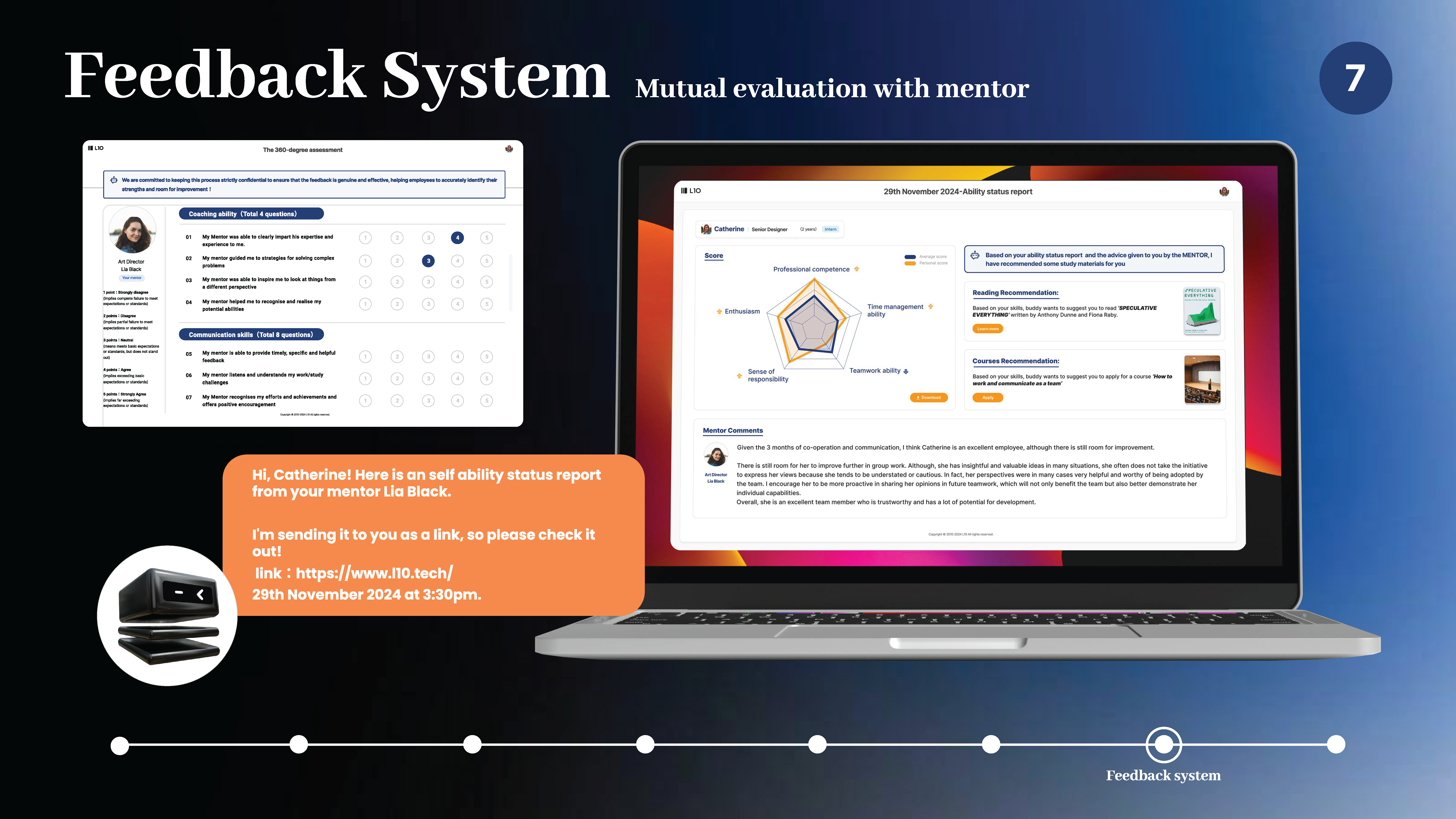
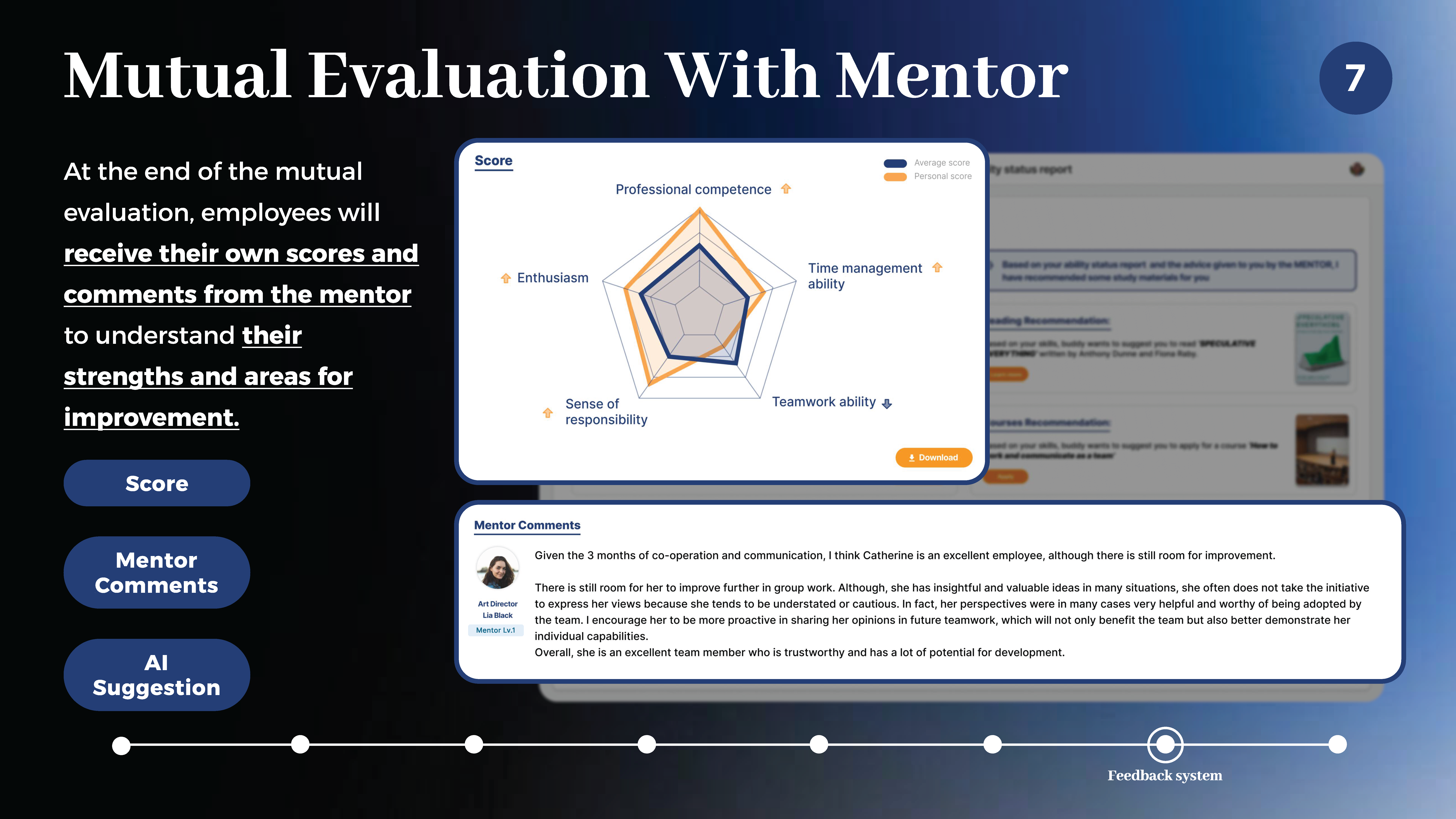
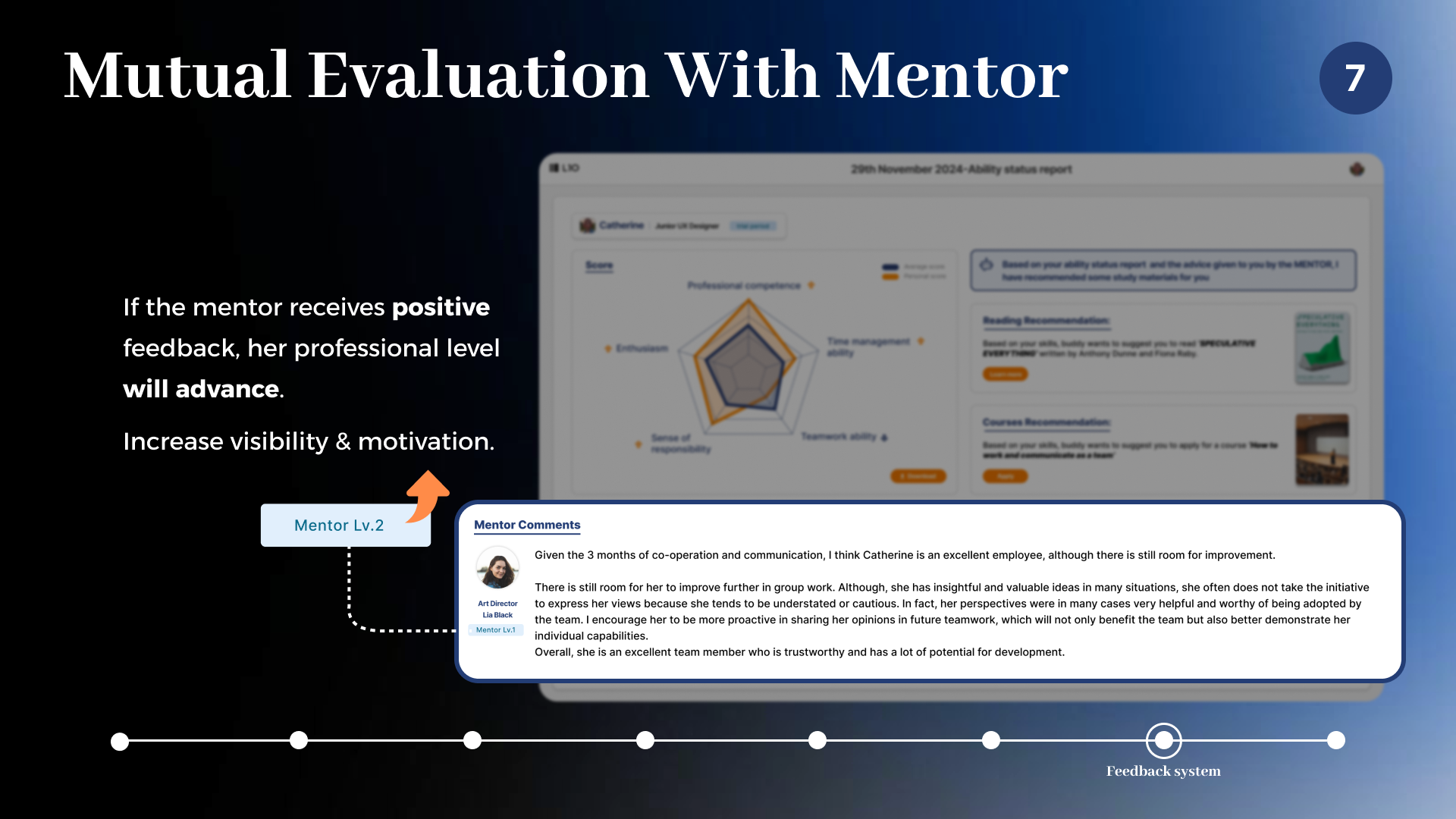

Before
joining the company, the employee receives a pre-orientation e-mail containing
a questionnaire that is used to understand the employee's career goals and
individual needs. The questionnaire is based on the Holland Code Questionnaire,
which is based on American psychologist John L. Holland's theory that “a
person's career preferences are in some sense an implicit expression of an
underlying personality”. The AI system generates a
personalized mentor based on the questionnaire results and matches it with a
real career mentor to ensure that the new employee receives clear guidance and
support before he or she is officially hired.
During the probationary period, the AI Buddy and the human mentor work together, with the AI Buddy providing real-time feedback and resource suggestions, while the human mentor provides emotional support and career guidance through regular communication. With this dual support, employees can adapt to their new work environment faster and clarify their career goals.
At the end of the probationary period, employees receive two-way feedback from their mentor, a 360-degree assessment of their performance, and advice on future career development, and AI Buddy continues to support their professional growth with customized skills training and task management tools. In a few years, when new employees become veterans of the company, they can become the next mentor. We want this system to be a continuous cycle.
During the probationary period, the AI Buddy and the human mentor work together, with the AI Buddy providing real-time feedback and resource suggestions, while the human mentor provides emotional support and career guidance through regular communication. With this dual support, employees can adapt to their new work environment faster and clarify their career goals.
At the end of the probationary period, employees receive two-way feedback from their mentor, a 360-degree assessment of their performance, and advice on future career development, and AI Buddy continues to support their professional growth with customized skills training and task management tools. In a few years, when new employees become veterans of the company, they can become the next mentor. We want this system to be a continuous cycle.
AI Buddy
AI buddy evolved from the L10 logo;Changes its expression according to the user's needs.

Feesback System
At the end of the probation period, the real-life mentor and the new employee will conduct mutual evaluations based on a 360-degree evaluation.
Service Blueprint
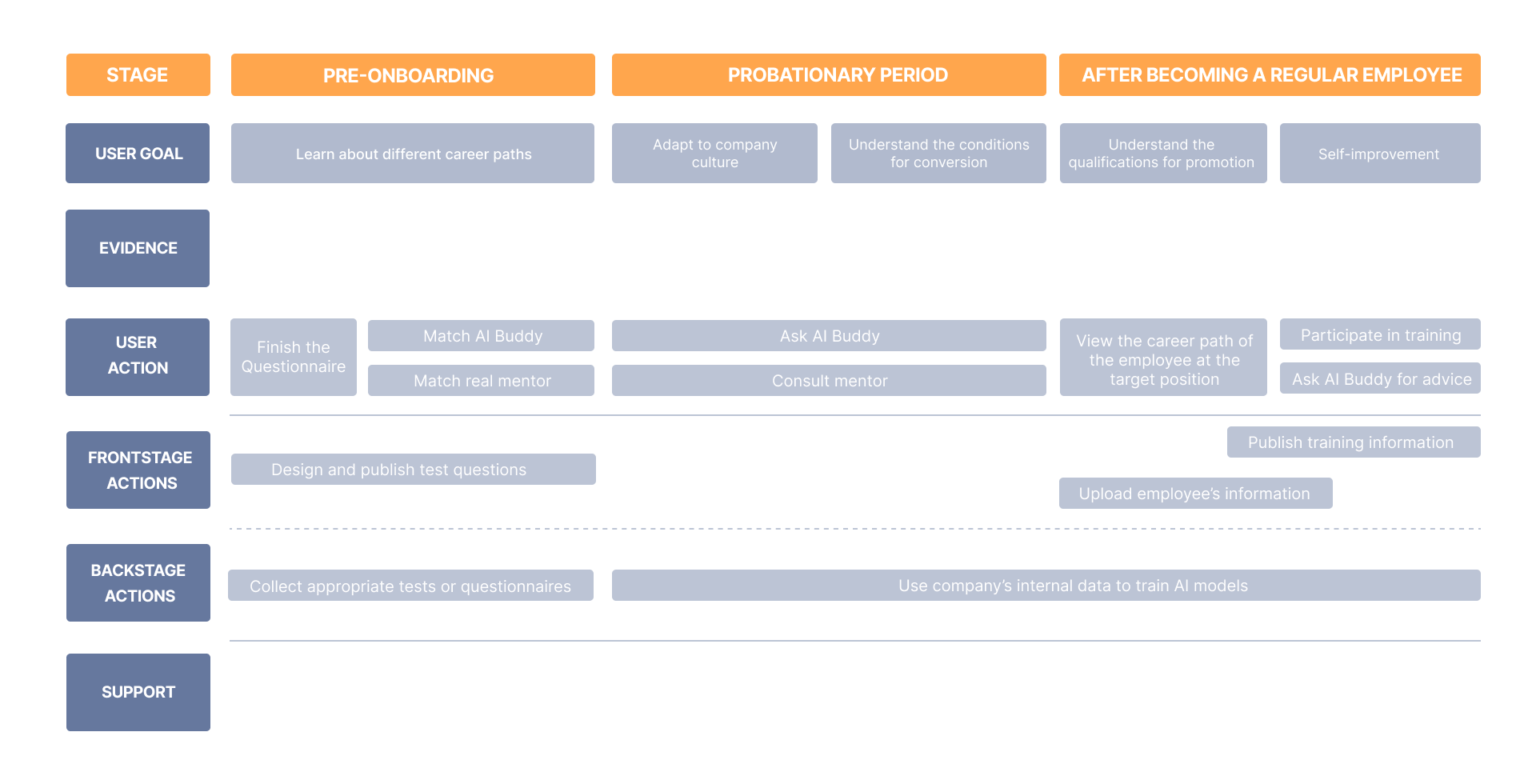

FEEDBACK & FUTURE PLAN
In the course of our practice, we encountered some
challenges. Our project also had some flaws at the beginning, such as not
enough participants in the research part leading to a relatively small sample
size and not enough detailed feedback collected. Especially the balance between
the personalization of the AI mentor system and the diverse needs of employees.
Some Gen Z female employees were dissatisfied with the feedback mechanism of
the AI Mentor System, believing that the advice provided by the system was too
generic and failed to effectively address their specific dilemmas in career
development. As the project did not have enough time, we only completed the
front-end prototyping, and the back-end needs to be encompassed if it is to be
put into a real-world environment as a way of determining whether our project
is feasible or not.
In our future plans, we are adding personalized data analytics to enable the system to provide more specific advice and support based on each employee's performance, feedback, and career goals. the image and tone of AI Buddy also needs to match the company's culture. Most importantly, feedback on the system is collected on an ongoing basis to improve the overall service.
In our future plans, we are adding personalized data analytics to enable the system to provide more specific advice and support based on each employee's performance, feedback, and career goals. the image and tone of AI Buddy also needs to match the company's culture. Most importantly, feedback on the system is collected on an ongoing basis to improve the overall service.

In summary, by combining service design theory and practice, we provide an innovative workplace onboarding support program for Gen Z female employees. Through user research, co-creation process, prototype testing, the theory not only guided every step of the design, but was also verified in practice. We will continue to improve this system, incorporating more feedback to further optimize the employee experience and promote diversity and inclusiveness in the workplace.